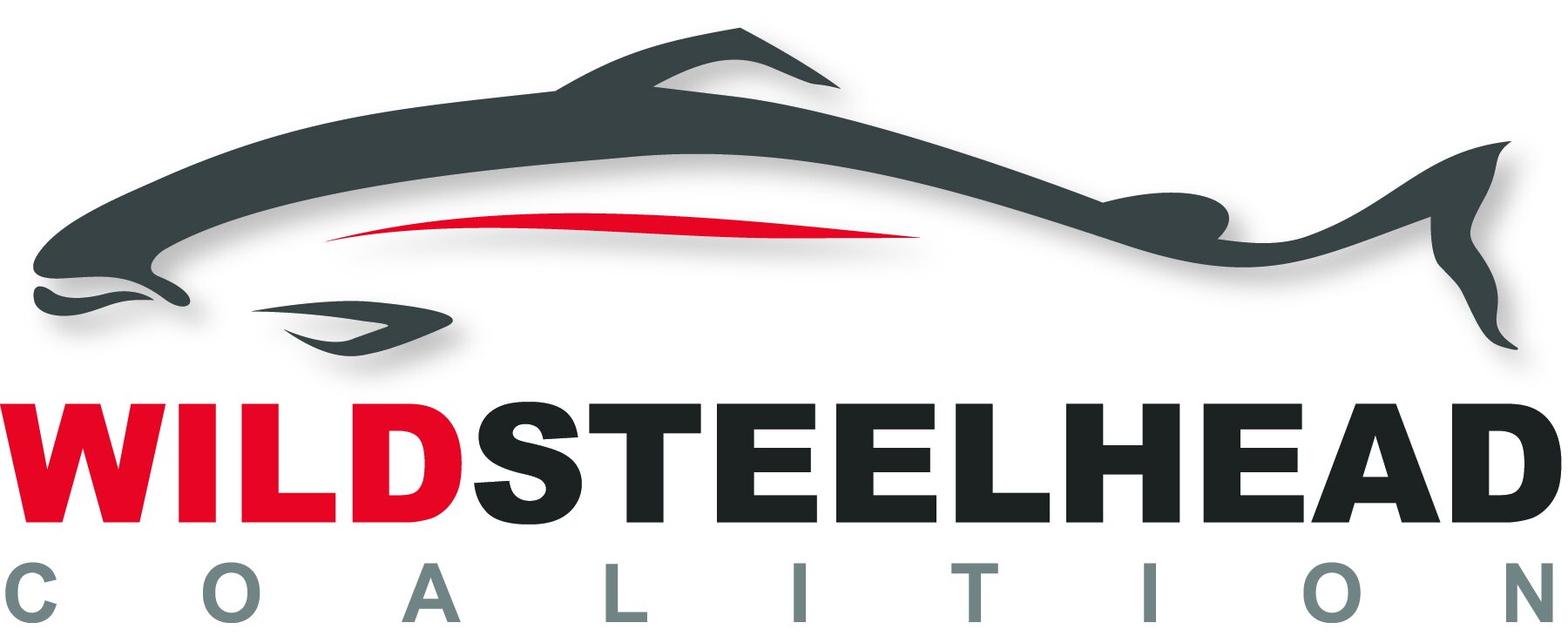On the Water
Many responsible anglers are already taking serious steps to reduce their individual impacts on wild steelhead. They intentionally choose to limit the number of fish they encounter by using less efficient methods or by putting down the rod for the day after landing one. They opt not to fish at all when the water is too hot or run numbers are too low, even if fishery managers are still allowing it. If it is safe to fish, they run barbless hooks, land the fish quickly, and never lift wild steelhead out of the water. They see their time on the water as a privilege and a way to maintain connection to home waters. They know we need every wild fish to survive to spawn successfully.
The days of pounding on as many fish as possible are over. When there are so many anglers and so few fish our collective impacts accumulate quickly. We’ll push back against the loudest voices in our community - sometimes our friends - calling for irresponsible seasons and the fishery managers who fail to provide sanctuary water, cold water refuge, and the protections necessary to give wild steelhead space and time to rebuild their numbers.
We know this means we’ll fish less in the coming years, but we should take a cue from elk hunters who gladly accept limits on access, hunting methods, and harvest rates because they recognize the animals can’t survive without reasonable guardrails. (The parallels for steelheaders don’t end there. Elk hunters are also some of the most outspoken supporters of public lands and habitat protections.)
Responsible angling is an important first step in protecting the wild steelhead who manage to still return, but the most powerful work to change the trajectory for wild steelhead takes place away from the water. Steelheaders must carry our values home from the river and use them to harness our economic and political power to save our rivers and wild fish.
Investing in Recovery
Every year, anglers collectively spend millions of dollars on tackle, gear, boats, guided trips, and travel. Along the way, we buy tanks of gas, meals in restaurants, and rent rooms at hotels and cabins. We buy DVDs, magazine subscriptions, art works, and books about steelhead. This money supports tackle and fly shops, national and international manufacturers, outfitters and lodges, and rural economies all across steelhead country. New gear and trips to steelhead rivers near and far are exciting for sure, but these only benefit the angler’s experience, not the wild fish or the watershed. If we’re going to move the needle towards recovery, then steelheaders need to be investing much more widely in conservation and advocacy.
We should think of it as tithing for wild steelhead. The easiest way to do this is to donate resources to the advocacy nonprofits fighting to remove dams, restore habitat, push for better fishery policy, litigate when it is necessary, and educate anglers. An individual angler might not have the resources or knowledge available to replace a culvert blocking fish passage or file a lawsuit about a dam’s water temperature impacts under Section 401 of the Clean Water Act, but they can certainly join and support the organizations that do.
The same goes for the businesses depending on healthy steelhead runs. Anglers and the sportfishing industry have an opportunity to be partners working for wild steelhead recovery. Tackle and gear manufacturers, shops and guides all benefit from these public resources and they have an obligation to give back to the fisheries that make their businesses possible. There isn’t any room left for companies who are willing to profit from wild steelhead but aren’t investing in recovery or using their influence to push for protections and restoration. If a steelheader has a choice between two different reels, or two different guided trips, or two different pairs of waders, and one is from a company that publicly and financially supports wild steelhead conservation and the other doesn’t do anything at all, then it is clear who deserves our business.
Speaking Out and Showing Up
A steelheader might be someone who fishes local rivers with old gear or someone who buys new rods for their annual trip to a lodge in British Columbia. It seems reasonable that those two anglers would have differing financial responsibilities to donate to conservation organizations, but both of them have a voice and they should be using it to loudly call for better management and more public investment in watershed and wild steelhead restoration.
Wild steelhead are born in and return to public watersheds and their entire lives depend on the water, habitat, and fisheries overseen by Federal and State agencies and local municipalities. With our tax dollars, politicians fund these public institutions. They are run by public servants. Both are accountable to their fellow citizens. Wild steelhead might not have a voice or a vote, but anglers and businesses have the opportunity, and obligation, to speak up on behalf of wild steelhead.
There is great political power in this advocacy and collaboration. Dams get removed when citizen coalitions are unrelenting. Washington’s Wild Steelhead Gene Banks and rules against killing wild steelhead were put in place by advocates, including volunteers at the Wild Steelhead Coalition, pushing relentlessly on managers, politicians, and commissioners. When elected leaders hear from constituents in great enough numbers, they can be forced to support and fund fishery protections and habitat restoration. Public utilities can be held accountable for water quality and temperature impacts at their hydropower operations. The list goes on and on.
























